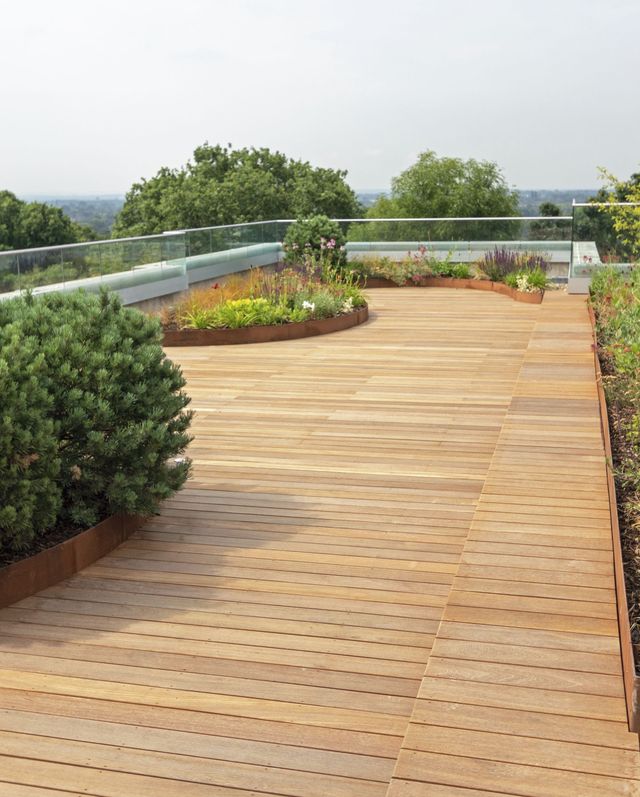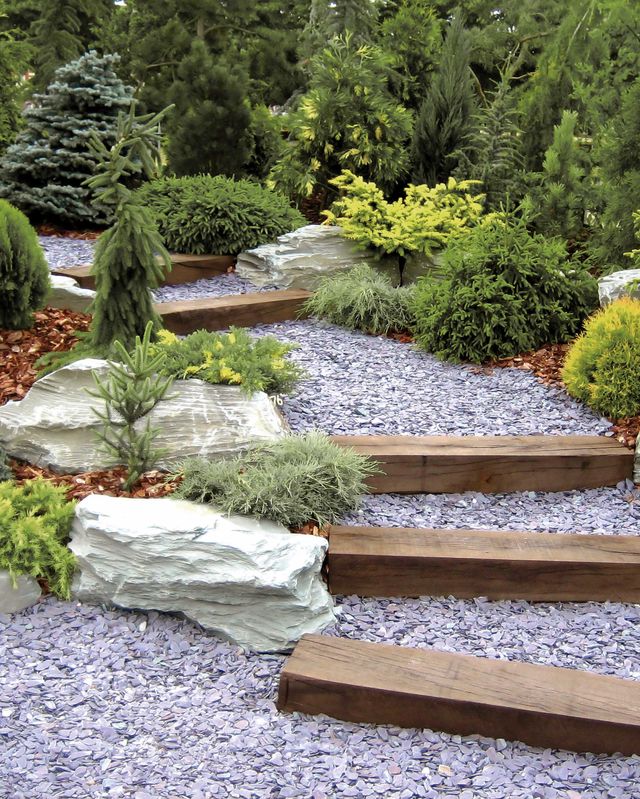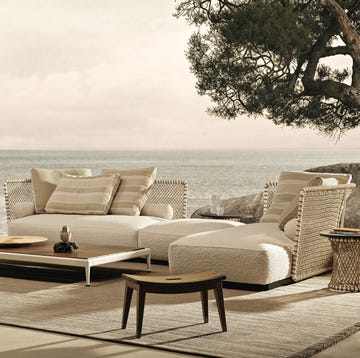Britain may not be blessed with the certainty of sunshine, but that doesn’t stop the garden being the most important room for entertaining in spring and summer (this year especially).
Key to creating the right atmosphere for al fresco dining, barbecuing and partying is selecting the right outdoor flooring for your space. Here, we take an in-depth look at the most popular options out there, from timber to wood-effect porcelain, gravel and more.
By sharing expert advice on materials, how to fit your decking and what you need to know about maintaining it, we ensure an informed choice. As well as introducing you to the specialist brands that can help you transform your green space.
What's everyone reading?
If I choose wooden decking, what are the best varieties?
Tropical hardwoods, such as ipe (also called Brazilian walnut), have long been the go-to material for decking but, with many treated softwoods now coming with a 50-year rot-free guarantee, there are more options available. ‘The new generation of technical timbers is arguably better to use and cheaper to buy,’ says ChrisShort, marketing director at Alfresco Floors.
‘Kiln-treated softwoods, such as thermo-ashor pressure-treated pine will now out last many of the more traditional options.’ If you opt for hardwood, always check that it’s sustainably sourced with FSC certification. Another choice is composite boards, usually made from a mix of wood and plastic, which are rot-proof and resistant to mould.
How should I maintain my decking ?
‘Hardwoods and technical timbers need to be well looked after if you want them to keep their original colour,’ says Short. ‘Decking should be sanded and oiled annually, while occasional jet-washing will remove any surface debris.’ Without this care, all wood will weather down to a silver-grey patina.
‘It’s hard to find composite boards that compare to the aesthetic of real timber, but the positive is that they won’t change colour like natural materials do,’ continues Short. ‘For relatively maintenance-free decking, porcelain is the new surface of choice.’
Anything else to consider?
Yes, the fixings. Historically, every board was fixed in place by individual screws, but now there are hidden fixing systems that result in cleaner lines and a more seamless look. ‘Initially, this technology relied on side-mounted clips, which you could still see in between each board. Now, though, there are new types such as ‘Grad’, a rapid-fit clip system that conceals all of its fixings,’ says Short.
What if I would rather have gravel?
It’s an affordable and easy material to lay. Choose the 14mm or 20mm types (the latter will ensure cats don’t use it as a toilet). ‘Lighter-coloured gravel will brighten shady areas of your garden,’ says Sue Jackson, manager at Stone Warehouse.
‘Ideally, it should be put onto a porous base, such as mud or grass, so that water can drain away, but it can also be added to concrete or tarmac surfaces. We recommend using a weed membrane, which will reduce the amount of unwelcome plants.’
Slate chippings are good for decorative areas, and pebbles and cobbles create height and depth. ‘The golden rule is to use gravel made from a local stone, as its colour should harmonise with any existing paving or walls,’ explains landscape gardener Andy Sturgeon, who designed the M&G Garden at 2019’s RHS Chelsea Flower Show. If you’re using several packs of gravel, mix them to blend the colours.
Finally, is there anything I should know before paving an outdoor space?
‘Once you’ve decided where to put your paving, mark any permanent fixtures on a plan,’ suggests Tony Kersey, landscaping and garden decor buyer at Homebase. ‘If you have to pave around manhole covers, this can affect the level of your decking. Plus, remember, the surface must finish at least 150mm below the damp proof course of the house so rain doesn’t hit the untreated wall above.’
Staggering your paving or laying a pattern of different-sized blocks means you’ll have to cut slabs to achieve a straight border. ‘Clay paving is popular and comes in many colours, while porcelain is ideal for roof gardens,’ concludes Sturgeon.
6 of the best garden flooring brands
Whatever the best flooring solution for your garden, these are the experts to know
Best for timber decking
Alfresco Floors
This company sells both conventionally fixed decking and the ‘Grad’ system, with its snap-lock design and hidden fixings. For the latter, choose between accoya, kebony, thermo-ash and thermo-pine. alfrescofloors.com
Best for slate chippings
Dandy’s
Wales-based business Dandy’s stocks a huge mix of garden supplies, including crushed green and Welsh slate, as part of its extensive gravel range. For decorative patio areas, opt for chunky 40mm pieces. dandys.com
Best for gravel
Stone Warehouse
Offering a wide selection of gravel in a multitude of colours, sizes and styles – plus pebbles and cobbles – Stone Warehouse is your one-stop outdoor surface shop. stonewarehouse.co.uk
Best for wood-effect porcelain
Domus
Among this tile supplier’s many collections is its porcelain external tiles– all 20mm thick and highly durable.These easy-clean, anti-slip tiles come in four colours, including limestone and oak. domusgroup.com
Best for large porcelain tiles
Florim
For all things ceramic, look no further than this distinguished Italian tile manufacturer. Florim’s large-format porcelain tiles and slabs are perfect for creating a clean and spacious look. florim.com
Best for composite decking
Wickes
Alongside hardwood options, Wickes also supplies bamboo composite boards with a timber-grain effect. Hardwearing and slip-resistant, they boast high UV stability and a choice of colours. wickes.co.uk
This article first appeared in ELLE Decoration May 2019
Like this article? Sign up to our newsletter to get more articles like this delivered straight to your inbox.
Keep your spirits up and subscribe to ELLE Decoration here, so our magazine is delivered direct to your door.




















